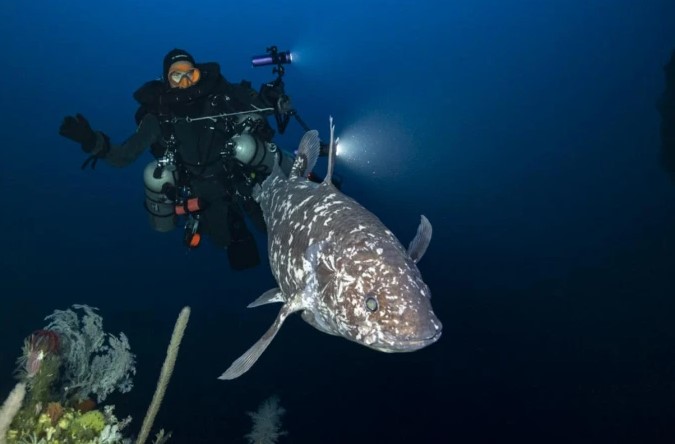The first-ever encounter with a live Sulawesi coelacanth has just been reported by divers off the coast of Indonesia. However, to protect this incredibly rare species from tourists who may want to catch a glimpse, researchers have decided to keep the exact location of the sighting secret for now.
Often referred to as a “living fossil”, the marine oddity is one of two existing species of coelacanth and was once thought to have gone extinct around the time that the dinosaurs bit the dust some 65 million years ago. However, the creature made a surprising comeback in 1938 when fishermen off the coast of South Africa caught a West Indian Ocean coelacanth (Latimeria chalumnae).
The Sulawesi coelacanth (Latimeria menadoensis), meanwhile, remained undiscovered until scientists came across one at a fish market in 1997. Until now, though, the species had never been photographed or filmed in its natural habitat, and the only reported sightings came from remotely-operated submarines.
Yet that changed in October 2024, when the authors of a new study came across a 1.1-meter-long (3.6-foot) Sulawesi coelacanth at a depth of around 144 meters (472 feet) in the North Maluku province of Indonesia. “Interestingly, it was out in the open, not inside a cave or under an overhang, which have long been considered coelacanths’ diurnal hides,” write the researchers.

Coelacanths are among the last surviving lobe-finned fish.
“When the observation was made, the animal already had its dorsal fin completely erect and kept it like this all the time, which could be associated with an active state or potentially a natural defensive behaviour,” they explain. The following day, the same coelacanth was spotted again at the exact same location, with its dorsal fin once again erect.
Unlike the majority of fish alive today – which are descended from a ray-finned ancestor – coelacanths are among the last remaining lobe-finned fish, meaning they have fleshy, bone-filled fins that almost look like limbs. Dating all the way back to the Devonian period, coelacanths first appeared some 420 million years ago and possess a number of archaic features, such as a hinge-like head that can swing open and an electrosensory organ inside their nose.
“Today, all known coelacanth populations are under anthropogenic pressure globally, and new threats may well arise in the near future with the development of potentially lucrative and unregulated coelacanth tourism activities,” write the study authors. “Therefore, to protect a potential new population of the vulnerable L. menadoensis from disturbance, the exact locality of this discovery has been withheld until further studies are conducted and better protections are in place,” they say.
The study has been published in the journal Scientific Reports.
Source Link: Only 2 Species Of This “Living Fossil” Exist – And 1 Was Just Photographed In The Wild For The First Time